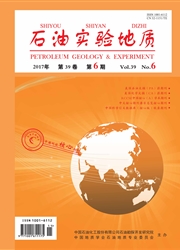

 中文摘要:
中文摘要:
基于三维地震和钻井资料,结合现代岩溶学,探讨了塔里木盆地阿克库勒凸起于奇和轮南地区海西晚期古岩溶特征。研究结果表明,于奇地区主要表现为准平原特征,发育溶沟、洼地等岩溶地貌,明显受断裂的控制,地表水系呈多期特征。于奇地区准平原的形成与构造部位、地层产状、古气候和侵蚀基准面等因素密切相关。轮南地区抬升幅度较高,夷平作用不完全,仍残留部分峰丛地貌。海西早期古岩溶形成的是大型峰丛—洼地岩溶地貌,地表和地下水系较为发育,与海西晚期存在较大差异。同时,于奇地区与海西晚期古岩溶作用相关的缝洞储集体主要沿断裂带分布,而轮南地区整体发育,缝洞储集体发育分布受侵蚀基准面、断裂和准平原化程度控制。
 英文摘要:
英文摘要:
Based on 3D seismic and drilling data, combined with modem karstology, this paper discussed the characteristics of Late Hercynian paleokarsts in the Yuqi and Lunan areas of the Akekule Uplift, the Tarim Basin. Study results showed that the Yuqi area was a peneplain, developing karst landforms such as grikes and depressions, which were controlled by faults. The surface water system featured muhiple periods. The formation of peneplain in the Yuqi area was closely related to tectonic position, stratum attitude, paleoclimate and the base level of erosion. The Lunan area rose higher than the Yuqi area in the Late Hercynian. Some peak clusters remained since peneplanation was not complete. Large peak cluster and depression karst landforms formed in the Early Hercynian, and groundwater systems were well developed, which was different from the situation in the Late Hercynian. Fracture and cave reservoirs related to the Late Hercynian paleokarsts were mainly distributed along fault zones in the Yuqi area. They were widespread in the Lunnan area, and were controlled by the base level of erosion, fault and peneplanation degree.
 同期刊论文项目
同期刊论文项目
 同项目期刊论文
同项目期刊论文
 期刊信息
期刊信息
